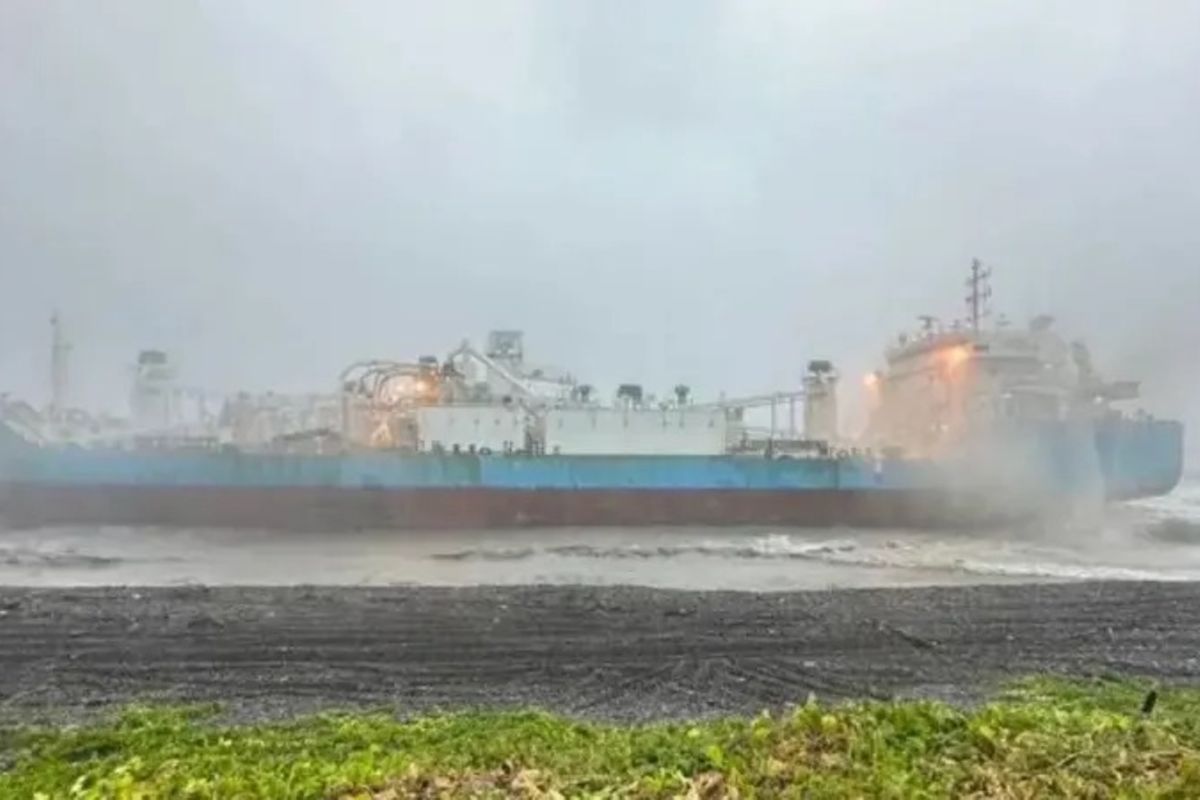Dar es Salaam. Meli ya mizigo iliyodaiwa kupeperusha bendera ya Tanzania imezama karibu na bandari ya Kusini ya Kaohsiung nchini Taiwan baada ya kupigwa na kimbunga Gaemi.
Akizungumza na Mwananchi leo Julai 26, 2024, Mkurugenzi wa Mawasiliano katika Wizara ya Mambo ya Nje na Ushirikiano wa Afrika Mashariki, Balozi Mindi Kasiga amesema wanafuatilia tukio hilo kupitia ubalozi wa Tanzania nchini China.
Kwa mujibu wa mtandao wa Vessel Finder, meli hiyo ya mizigo ya kawaida iliyojengwa mwaka 1999, inamilikiwa na kampuni ya XIN LI, ikiwa na namba IMO 8685260, MMSI 677016900 na kwa sasa inatumia bendera ya Tanzania.
Taarifa zilizochapishwa na Shirika la Utangazaji la Uingereza (BBC), meli hiyo ilikuwa na wafanyakazi tisa ambao bado wanatafutwa.
Meli nyingine
BBC imesema: “Kimbunga hicho pia kimeleta mvua kubwa isiyokoma nchini Ufilipino, ambako meli ya mafuta yenye takriban lita milioni 1.5 za mafuta ya viwandani imepinduka. Wafanyakazi 16 wa meli ya MT Terra Nova iliyobeba bendera ya Ufilipino wameokolewa, huku mmoja akiwa bado hajapatikana,” imesema taarifa ya BBC ikimnukuu Katibu wa Usafiri, Jaime Bautista.
“MT Terra Nova ilipinduka na hatimaye kuzama,” walinzi wa pwani wa Ufilipino walisema katika ripoti, wakiongeza kuwa walikuwa wakichunguza kama hali mbaya ya hewa ilikuwa sababu.
Kimbunga Gaemi, kilichoingia pwani ya Mashariki ya Taiwan Jumatano, kimeua watu watatu na kujeruhi mamia zaidi kwenye kisiwa hicho, maafisa nchini humo walisema.
Kabla ya kufika Taiwan, Gaemi ilizidisha hali ya mvua huko Ufilipino, ambako watu wanane walifariki dunia.
Mamlaka ya Walinzi wa Pwani ya Taiwan imesema Fu Shun, meli ya mizigo iliyopinduka kwenye pwani yake, ilikuwa na raia tisa wa Myanmar ndani. Iliongeza kuwa meli nyingine tatu za kigeni zimekwama wakati wa kimbunga hicho, japo ziko salama.
Taarifa zaidi zinaeleza kuwa, nchini Ufilipino, meli ya mafuta imepinduka katika Bahari ya Manila, ikiwa inaelekea katika jiji la kati la Iloilo na kuzama. Ilimwaga mafuta yaliyoenea kwa kilomita kadhaa, mamlaka zimesema. Maofisa waliongeza kuwa upepo mkali na mawimbi makubwa yanakwamisha mwitikio katika uokoaji.
Source: mwananchi.co.tz














